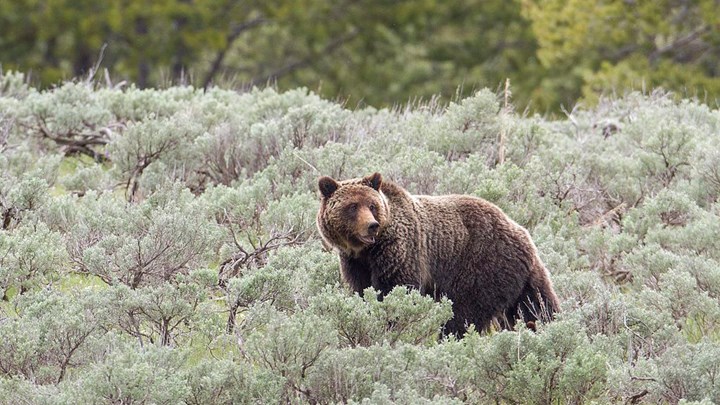
by Cody McLaughlin - Saturday, May 18, 2019

Chairman of the House Natural Resources Committee Rep. Raul Grijalva (D-Ariz.) introduced legislation last week to ban the hunting of grizzly bears in every state except Alaska. The Tribal Heritage and Grizzly Bear Protection Act, H.R. 2532, while still moving through the legislative process, would ban “trophy hunting and non-discriminatory predator control measures that may result in taking of grizzly bears on public lands.” It would require federal consultation with tribes before any permits could be issued, severely limiting the issuance of permits for the taking of grizzly bears. Interesting to note, none of the sponsors of the new legislation represent states that have grizzly bear populations.
In the Lower 48, grizzlies are only currently found in Washington, Idaho, Montana and Wyoming. According to the U.S. Fish and Wildlife Service (USFWS), “There are five areas where grizzlies remain today, Yellowstone ecosystem, Northern Continental Divide ecosystem, Cabinet-Yaak ecosystem, Selkirk ecosystem, and Northern Cascades ecosystem.” And, of course, there are also grizzlies in Alaska.
The Science on Bear Hunts
As covered by this website, the best wildlife science available on grizzly bears does support a legal, regulated hunt as a critical tool to managing in the Yellowstone-area grizzly population. In fact, grizzly bears are now so densely populated in the 22,500-mile Greater Yellowstone Ecosystem that they have reached carrying capacity. No wonder the USFWS says they are not threatened.
Just as with the New Jersey black bear hunts, the necessity of the hunts becomes clear when we examine the facts. As with most big-game hunts, grizzly bear hunts are meant to prevent potentially life-threatening human-bear interactions. For instance, in 2017 alone, the state of Wyoming caught 31 bears as a result of conflicts with humans, 11 of which were killed by the state. The state relies on a grading system (as do most state wildlife agencies) of the level of problems the individual bear poses to public safety, agriculture and property.
How about in Yellowstone? Four people were injured encountering bears. Over the course of the past decade, there have been 29 bear-attributed injuries and five deaths in Wyoming, and one in Montana. As reported on this website, one was the death of hunting guide Mark Uptain on Sept. 14, 2018, as a federal judge delayed the Wyoming Game and Fish Department’s plans to have its first hunting season for grizzlies in more than 40 years. These numbers don’t lie, and there is a stark correlation between the number of bear-human interactions and the density of the population of any group of animals.
At the same time, western states have seen that bears continue to expand their range outside of so-called “prime habitat,” which is currently estimated by bear biologists to be nearing 94 percent of carrying capacity, or the amount of a species that the resources in a given ecosystem can support. Put those numbers together and it is easy to see why states need regulated hunts, and that it is not just a “trophy hunt,” as anti-hunting extremists would have the general public believe.
What Comes Next
According to Govtrack.com, this bill was up in committee on May 15 in Grijalva’s House Committee on Natural Resources: Subcommittee on Water, Oceans and Wildlife. The general public is encouraged to weigh in and register its input on the issue.
Once this bell is rung, it can’t be unrung. And once we lose one sport, every single one goes on the chopping block with it.
Editor’s Note: As for how animal rights extremists work to end hunting one step at a time, look no further than what happened in British Columbia. Touting emotion over science-based wildlife management, extremist groups shut down the hunting of grizzly bears there on Nov. 30, 2017.
About the Author
Cody McLaughlin is a noted conservationist and conservative thought leader on public policy issues including hunting, fishing, gun rights, free-market tax and wage policy and the environment. He works as a GOP consultant for conservative political causes, managing clients’ digital communications and online presence and as a trustee of the New Jersey Outdoor Alliance, helping to represent the state’s 1.2 million sportsmen in the political arena.
Follow NRA Hunters’ Leadership Forum on Twitter @HuntersLead.
E-mail your comments/questions about this site to:
[email protected]
